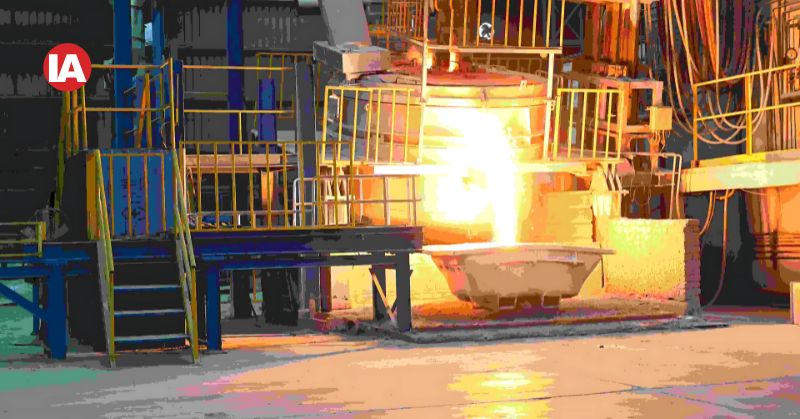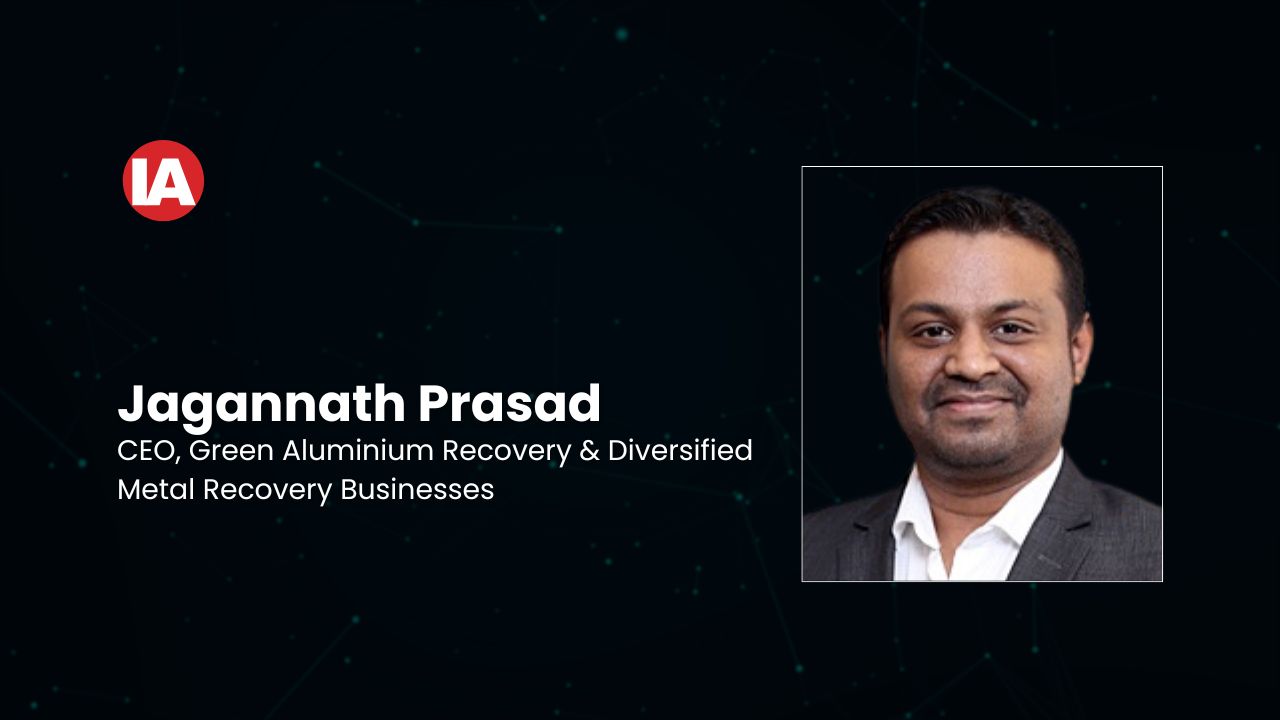
Making Manufacturing Actually Green with PPP Enabling It
The manufacturing sector holds immense potential to become a sustainability benchmark through strategic Public-Private Partnerships, forward-thinking regulations, and innovative incentives. Jagannath Prasad, CEO of Green Aluminium Recovery at Runaya, emphasizes the urgent need for a collective effort to green the industry. By addressing challenges like carbon emissions, resource dependency, and skill gaps, the sector can transition toward a greener future while driving economic growth and innovation.
![[object Object]](https://admin.industrialautomationindia.in/storage/articles/article-Er6zaXFMN1sGL73XczO3PXANvTiRa3kgCW2ycyAH.jpg)
With smart partnerships, targeted regulations, and strategic incentives, the manufacturing sector can evolve into a model of sustainability, says Jagannath Prasad.
When Sir David Attenborough said, ‘The natural world is changing. And we are totally dependent on that world’, he wasn’t just offering a thought; he was delivering a reality check about the toll heavy industries are taking on the planet. While there is growing global awareness of climate change and the need to reduce emissions, the manufacturing industry, though has made significant progress, still has room for improvement when it comes to reducing its environmental impact.
To put it in perspective, the Ministry of Steel estimates that India alone will need to invest Rs 23.52 lakh crore (about US$ 283 billion) to decarbonise its steel output and boost renewable energy use in the sector from 7.2% to 43% by 2029-30. Ambitious, right? There have already been significant steps taken by the industry, and policies brought in by the Government, there is a lot yet to do. From energy-intensive processes to supply chains that stretch across continents, manufacturing’s reliance on traditional practices makes true greening a distant but possible goal.
For example, manufacturing companies should look at how they could eliminate using external energy sources and maximise the use of inherent energy (from the exothermic reactions) generated during the production process. This will help reduce the dependency on conventional fuels like coal which is used predominantly today. Similarly, exploring innovative methods to recycle industrial by-products, turning what was once waste into valuable materials that contribute to a more sustainable, circular economy.
Sustainability needs a mindset shift!

Manufacturing is an essential industry that transforms raw materials into the products we use every day. While it traditionally requires significant energy and resources, the industry is making strides in adopting greener practices. Leading sectors, such as steel manufacturing, are now focusing on reducing waste, emissions, and energy consumption, demonstrating that sustainability and innovation can go hand in hand. As companies balance profitability with environmental responsibility, there are increasing opportunities to retrofit factories, adopt cleaner energy, and streamline supply chains. Although challenges remain, particularly for small and medium enterprises, the shift towards more sustainable manufacturing practices is gaining momentum, supported by global commitments and evolving technologies.
The global nature of supply chains adds complexity, with companies relying on suppliers from different regions, making consistent sustainability standards hard to achieve. To overcome these gaps, governments, industry leaders, and global organisations must collaborate on frameworks that encourage sustainability while enabling growth and business continuity. The European Union's (EU) Carbon Border Adjustment Mechanism (CBAM) is a prime example, putting a price on carbon emissions from goods entering the EU while promoting cleaner production in non-EU countries. By penalising companies that miss reduction targets, CBAM incentivises greener practices across borders. Moving forward, stricter regulations, subsidies, and standardised sustainability efforts will be crucial, as businesses realise sustainability is key not only for the environment but for long-term success as consumers increasingly favour eco-friendly products.
PPPs playing a hand in the transition
Public-Private Partnerships (PPPs) can significantly impact the manufacturing industry, especially in sectors such as metal manufacturing. Such partnerships will enable the development of shared facilities such as eco-industrial parks, where manufacturers can share access to renewable energy sources, waste recycling systems, and energy-efficient technologies. This pooled infrastructure reduces costs for individual companies while minimising overall environmental impact. For example, in Canada, PPP Canada Inc., was created to improve public infrastructure delivery through better value, timeliness, and accountability using PPPs. This initiative demonstrates how public-private partnerships can support infrastructure development while maintaining fiscal responsibility.
Additionally, PPPs help streamline supply chains by upgrading transportation infrastructure and promoting the use of sustainable logistics practices. For example, by investing in cleaner transportation networks and digitising supply chains, true PPPs will help reduce emissions and improve operational efficiency. These improvements lower costs and make it easier for manufacturers to meet sustainability goals.
PPPs also help address the issue of high upfront costs by combining public funding with private investment, making it easier to finance large sustainability projects. Rather than banking only on creative financing methods to manage risks, PPPs help distribute the financial risks between the public and private sectors, making large-scale projects less risky for private companies. By driving projects focused on sustainability, they also generate jobs and economic opportunities, especially in marginalised communities. This combination of financial, environmental, and social benefits makes PPPs a key driver in advancing green manufacturing.
Regulation, incentivisation, and education
Stricter environmental regulations by any government also push manufacturers to adopt greener practices. However, regulation alone is not enough. Businesses need to be convinced to adopt sustainable models by showcasing the financial benefits. This is where governments can play a pivotal role through tax incentives, subsidies, and the establishment of carbon credit systems.
Germany's Renewable Energy Sources Act provides tax breaks and subsidies to companies reducing their carbon footprint, encouraging greener practices. Similarly, in Sweden, companies that lower emissions receive preferential treatment in government contracts. This dual approach of regulation coupled with incentivisation can drive meaningful change. The private sector, in turn, must be willing to innovate and collaborate with public entities to meet these standards, viewing sustainability as a long-term investment rather than a cost.
Another key element in achieving a green manufacturing industry is developing the workforce. PPPs can help bridge the skills gap by investing in education and training for the next generation of workers. Transitioning to sustainable manufacturing requires people who are skilled in using green technologies and practices. Governments and companies can collaborate to create vocational programs, apprenticeships, and retraining initiatives focused on sustainability. These programs would help build a workforce not only capable of working in green industries but also aware of the business value of sustainability. A well-trained workforce can lead to greater efficiency, lower costs, and more effective implementation of sustainable practices across the industry.

The road ahead calls for a shared responsibility
The path to green manufacturing is not without its challenges, but it’s far from impossible. With smart partnerships, targeted regulations, and strategic incentives, the manufacturing sector can evolve into a model of sustainability. Public-Private Partnerships (PPPs) are key to breaking down financial and infrastructure barriers, making green practices accessible for all businesses. Success hinges on collaboration across sectors and borders, and the time to act is now. The future of manufacturing is green – and those who lead the charge will not only shape the industry but define the future of our planet.
Jagannath Prasad is CEO, Green Aluminium Recovery & Diversified Metal Recovery Business, Runaya.
Carrying a rich industry experience of almost two decades, Jagannath Prasad Routray is the CEO of Green Aluminium Recovery & Diversified Metal Recovery Businesses. His unwavering commitment to creating a green, empowered and sustainable tomorrow has helped him achieve multiple milestones in his career. Jagannath started his career as an Associate Manager – Operations in Hindustan Zinc.
Throughout his career, he has been entrusted with various roles and responsibilities including the strategic planning process, Business analysis and implementation of various Operational and Cost Initiatives. During his course, he has also handled over a million dollars spend base for Strategic Mining expansion projects – Mine development, infrastructure and beneficiation plants.
As a CEO at Runaya, he aims to build an organisation that strives to achieve zero harm and a sustainable circular economy in the metal & mining sector. He has successfully completed two Greenfield Projects in Aluminium Metal and downstream industry. Additionally, he is also driving the strategic acquisition, and New Projects for establishing a minor & base metal recovery business.
Being a committed leader and a professional, Jagannath has received multiple awards and recognitions under his name. He was a recipient of the Great Managers Award 2021. He has also been recognised as the Star of Business by Hindustan Zinc Ltd.
______________________________________________________________________________________________
For a deeper dive into the dynamic world of Industrial Automation and Robotic Process Automation (RPA), explore our comprehensive collection of articles and news covering cutting-edge technologies, robotics, PLC programming, SCADA systems, and the latest advancements in the Industrial Automation realm. Uncover valuable insights and stay abreast of industry trends by delving into the rest of our articles on Industrial Automation and RPA at www.industrialautomationindia.in